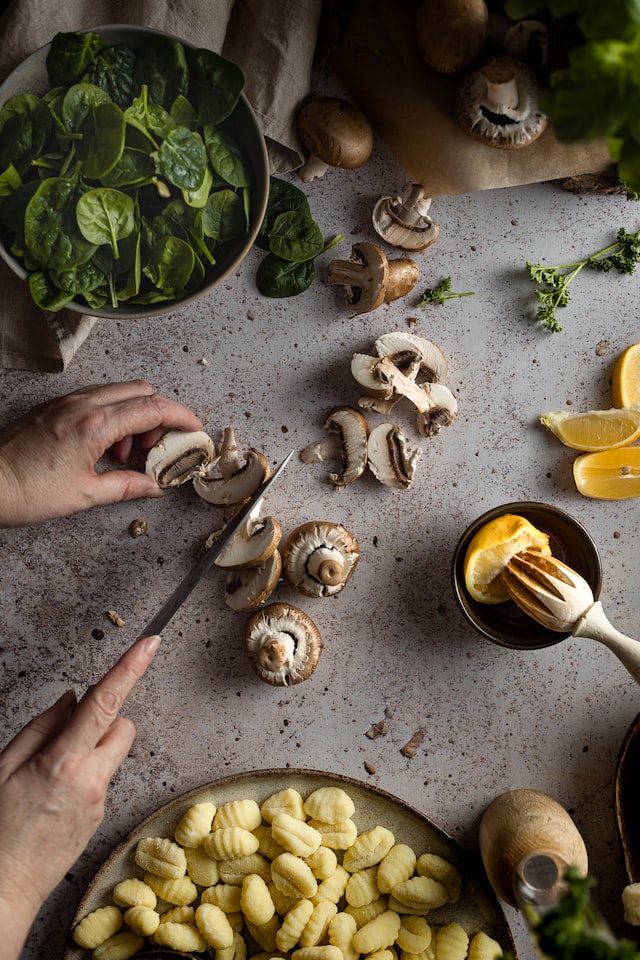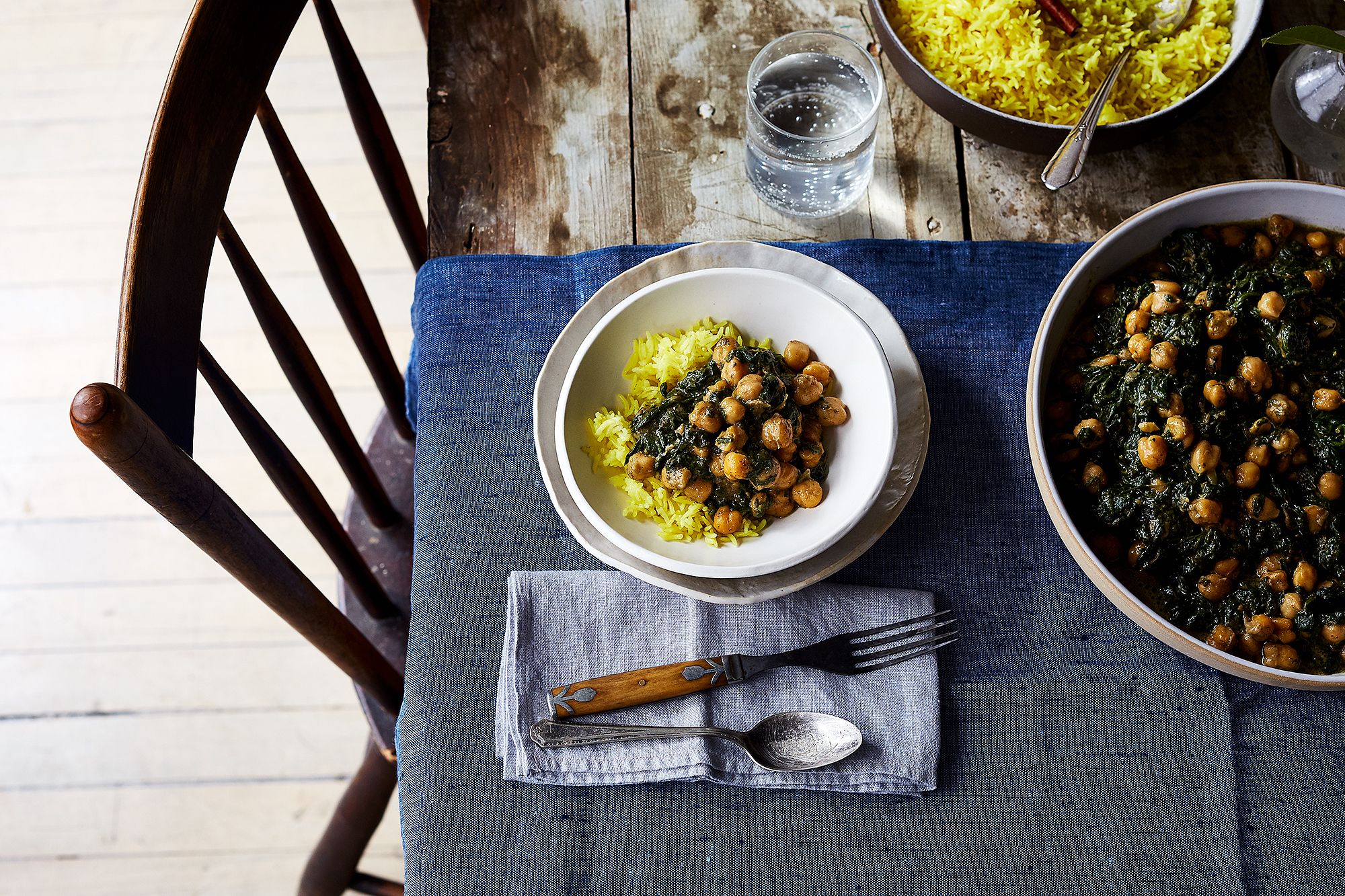Mushrooms are standout members of the fungi family that offer an earthy flavor when used in cooking and can make a great meat substitute for vegetarians and non-vegetarians alike.
But not knowing how to clean and store mushrooms can make or break your experience in the kitchen, leaving you with dirty or slimy shrooms that just don't taste good. Here's how to make sure you're cleaning and storing your mushrooms correctly, starting with how to select them at the market.
How to Select Mushrooms
When shopping at your local farmers' market or grocery store, make sure your shrooms look plump and are free from any dark spots. They should feel mostly dry to the touch and should be free of any slimy coating, which indicates the mushrooms have gone bad.
But don't bother looking for the "cleanest" whole mushrooms at the store, because seeing a bit more dirt in one carton of mushrooms compared to another doesn't mean there's anything wrong with them. "Mushrooms retain water, which can compromise their texture, so growers do not wash them with water prior to sending them to the store shelves," says World Mushroom Society founder Jason Vergara.
How to Clean Mushrooms
If you've wondered, "Should I rinse mushrooms?" the answer is yes, you can, but it doesn't necessarily have to be done. However, you should still clean them before cooking them. And if you do rinse them, only do so immediately before you're ready to prepare them. Otherwise, during storage any trapped moisture may cause the mushrooms to become moldy, slimy and discolored, and there will be a loss of texture and taste.
"If your mushrooms are particularly dirty, or you really feel the need to rinse them, that's an option," says Adam McCrae, founder of Mushroom Marauder. "But make sure to let them sit out on a kitchen towel for 15 to 20 minutes after rinsing so that they're nice and dry for the cooking process." You can also pat them dry or drop them in a salad spinner and take them for a ride. The important thing is to ensure the mushrooms are dry. Preventing the mushrooms from soaking up any excess moisture will help preserve their texture, and having dry mushrooms is especially helpful when you're trying to get a nice brown sear on them.
If you're giving your mushrooms a quick rinse in cold water, be sure to drain and dry them thoroughly before you get to cooking – this cannot be emphasized enough! Only introduce them to water when you're ready to cook, not when you first bring them home like you might with other fresh produce. Otherwise, they can get waterlogged and deteriorate more quickly. You could also use a damp cloth or paper towel rather than rinsing under running water or submerging the mushrooms in water.
Instead of rinsing, use a veggie brush to remove dirt from your mushrooms. If you don't have a gentle brush on hand, a dry paper towel will do the trick just fine.
Special Cases
If you're experimenting in the kitchen with mushroom varieties beyond your typical button mushrooms, you should be a bit more delicate during your cleaning process.
Enoki
Mild in flavor with a nice crunch, enoki mushrooms are joined by a dirt mycelium base. Vergara suggests making a "clean cut at the base and separating the enoki mushrooms from each other" to make sure you rid the shrooms of all dirt and debris.
Oyster
They are nothing like seafood as the name oyster mushrooms may suggest (though you can make vegan "scallops" with them), but these shrooms require a delicate touch. Use a damp towel to gently remove dirt. This way you'll avoid tearing the flesh or breaking the gills.
Morel
These honeycomb mushrooms contain crevices and grooves, and they're one mushroom that you should give a good soak before cooking. "We suggest rinsing [morel mushrooms] under cold water and then a short soak of 10 minutes to get all the excess dirt, and potentially insects and bugs, from the cavities. After a short soak, you can dry the mushrooms with a colander and paper towels," says Vergara. You could also pop them in a salad spinner to get rid of the excess water.
Is a Little Bit of Dirt OK on My Mushrooms?
A little bit of dirt can be harmless if consumed and is nearly inevitable since mushrooms are foraged from the ground. However, you should still do your due diligence to eat clean mushrooms. "Some dirt can contain pesticides and insecticides (if they are not organically grown)," says Vergara. "So be sure to give the mushrooms a thorough brushing, wipe-down or rinse before eating!"
How to Clean Sliced Mushrooms
Though it may seem more convenient to purchase pre-sliced button, cremini or other mushrooms, their shelf life is not typically as long as that of whole mushrooms. Even when stored correctly, sliced mushrooms typically only last five to seven days, in comparison to unsliced mushrooms lasting closer to 10.
"Even with the extra surface area exposed, they're not going to become immediately waterlogged if you give them a quick rinse," explains McCrae. "The trick here is to cook them for a bit longer, making sure to let that extra water evaporate before adding oil or butter and getting a nice sear!"
How to Properly Store Mushrooms
The way mushrooms have likely been packaged at the grocery store isn't the best way to keep them at home.
"Generally speaking, most mushrooms should be stored loosely in a paper bag, or in a box or bowl with a towel over the top. Allow for airflow without drying them out, and never store in plastic, which speeds the decay process [because it creates a humid environment]," shares McCrae.
A paper towel in the paper bag or on top of the box or bowl will absorb excess moisture from the mushrooms, keeping them dry and preventing any slime from developing. Keep your shrooms stored loosely together and not tightly packed to allow proper airflow and utilize the crisper drawer of your refrigerator. Don't think you can use yours up before they go bad? Try freezing your mushrooms instead.
Bottom Line
When it comes to cleaning and storing mushrooms, water is the enemy. Use a vegetable brush, another gentle brush or a dry cloth or paper towel to remove dirt before cooking. Alternatively, if you need to introduce a little water to clean your mushrooms, use a damp cloth or paper towel. If you rinse your mushrooms, make sure to dry them thoroughly. And remember, not all mushrooms are created equal. Some will require a little more attention to clean, like enoki, oyster or morel mushrooms.
This article was written by Jacqueline Weiss from EatingWell and was legally licensed through the Industry Dive Content Marketplace. Please direct all licensing questions to legal@industrydive.com.







